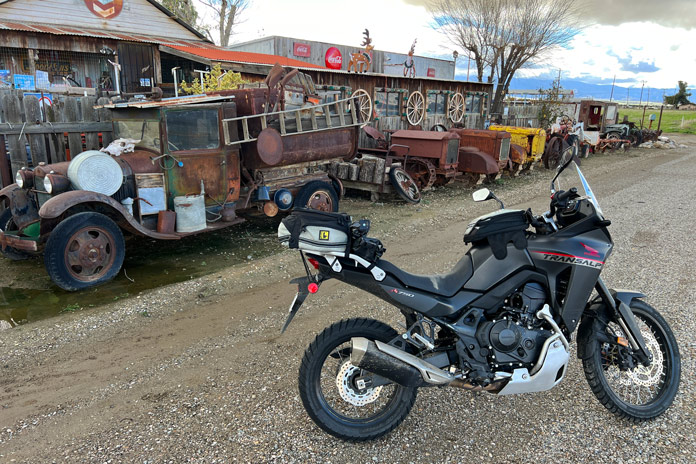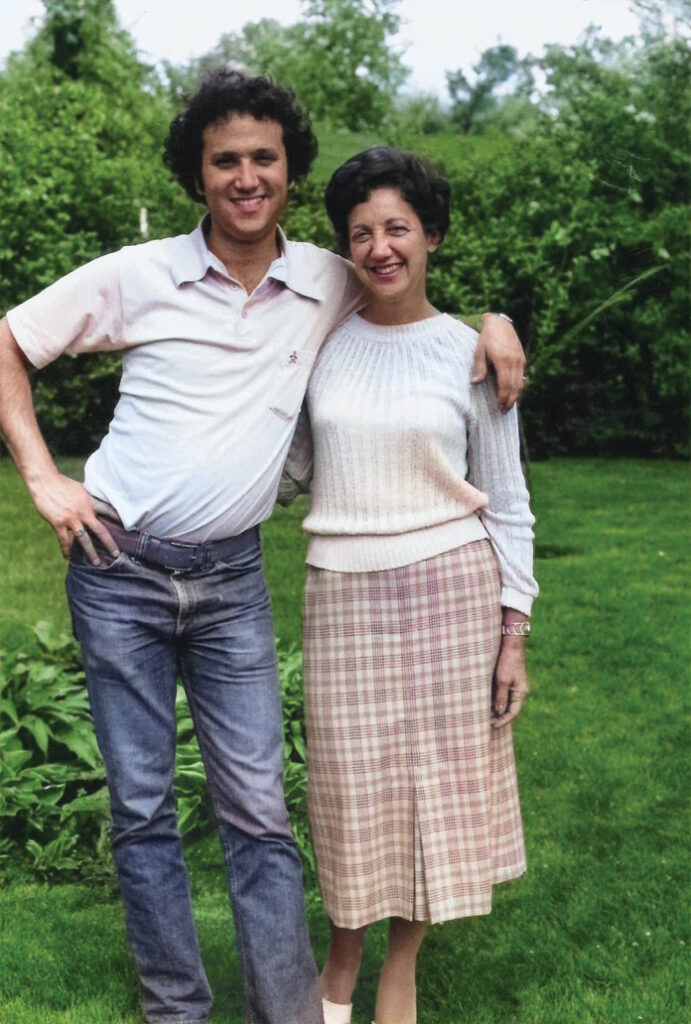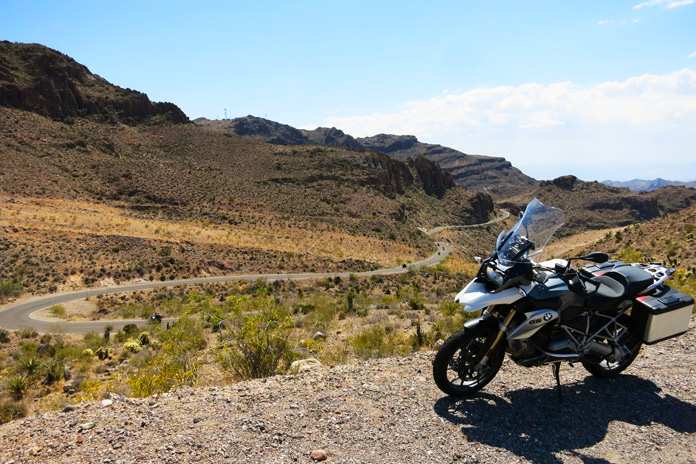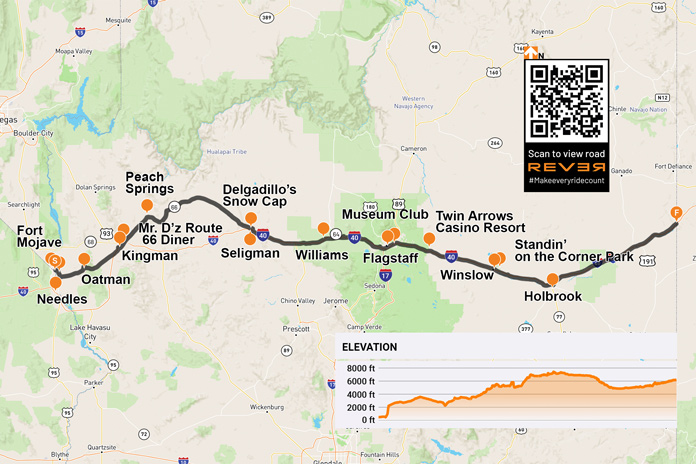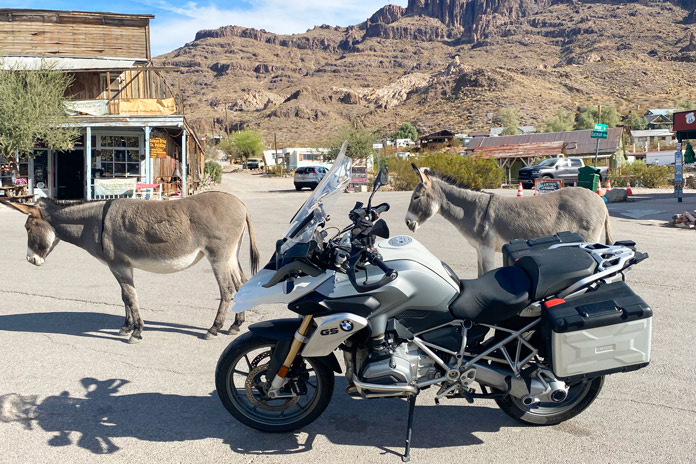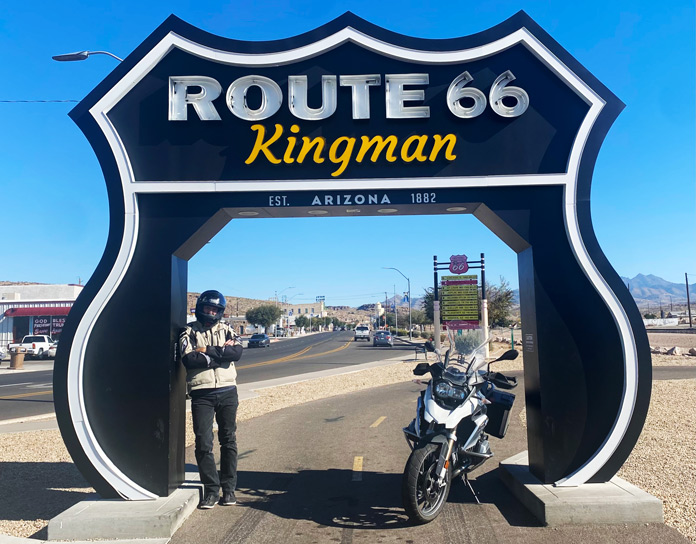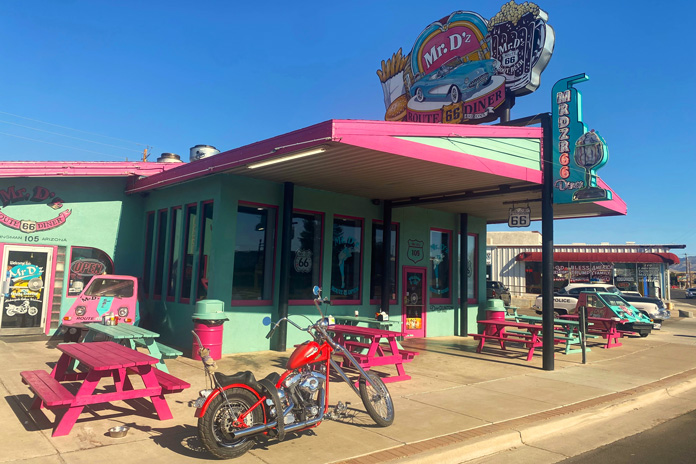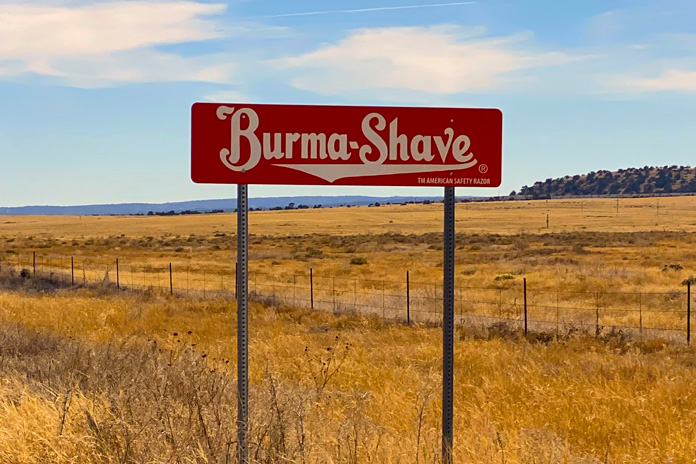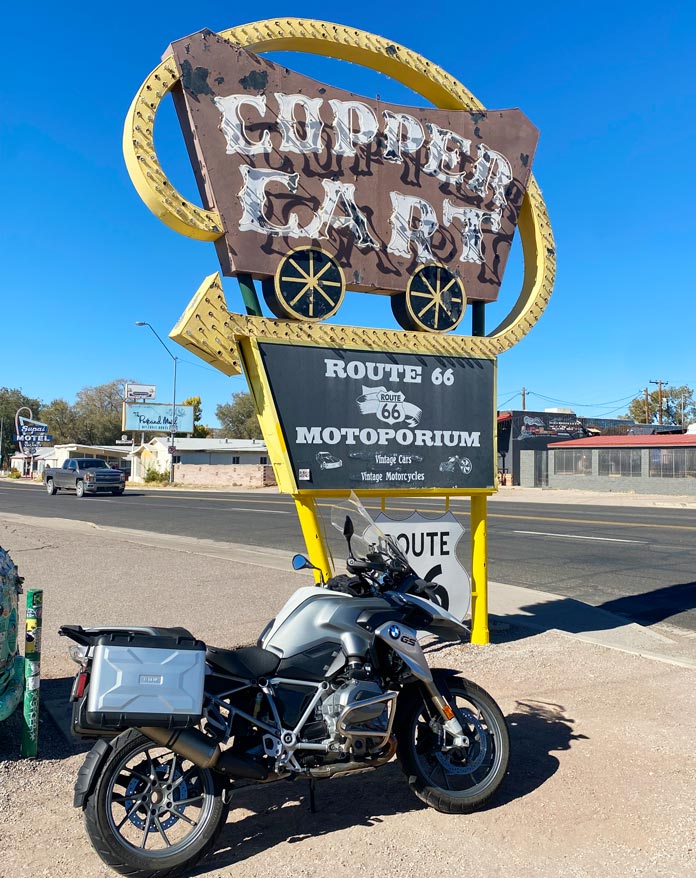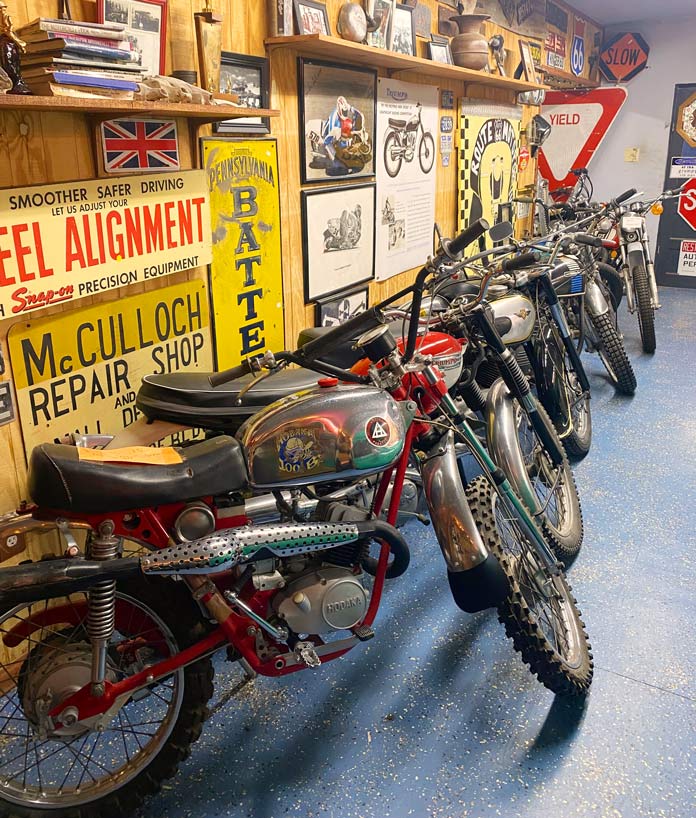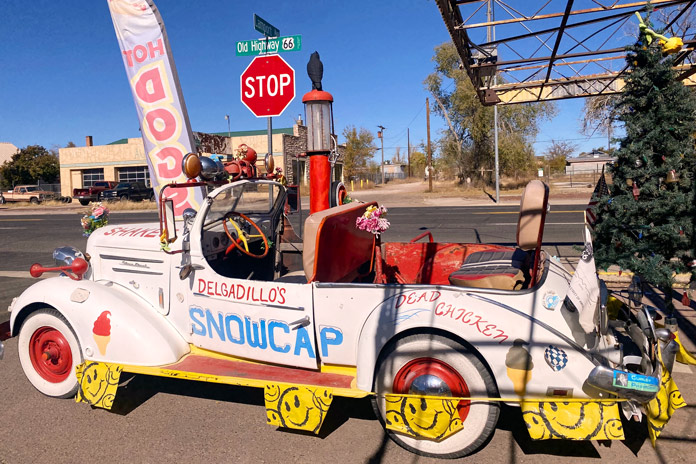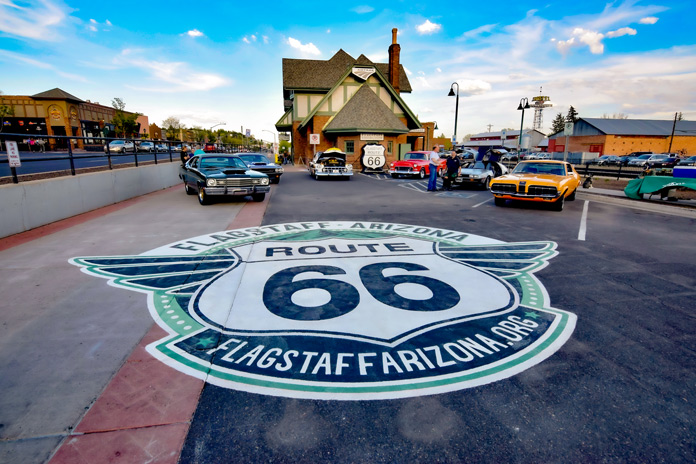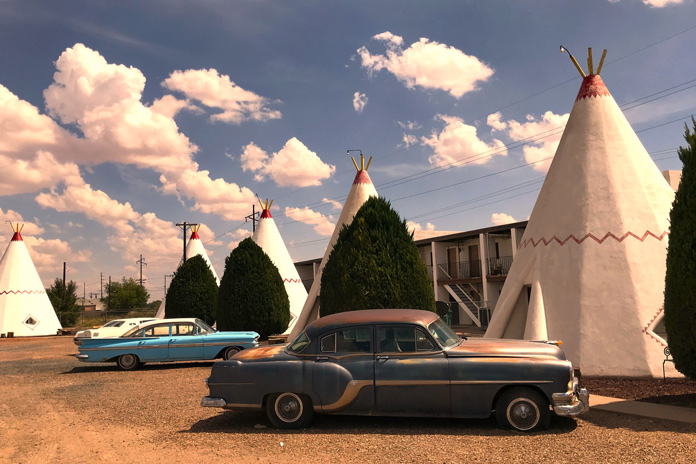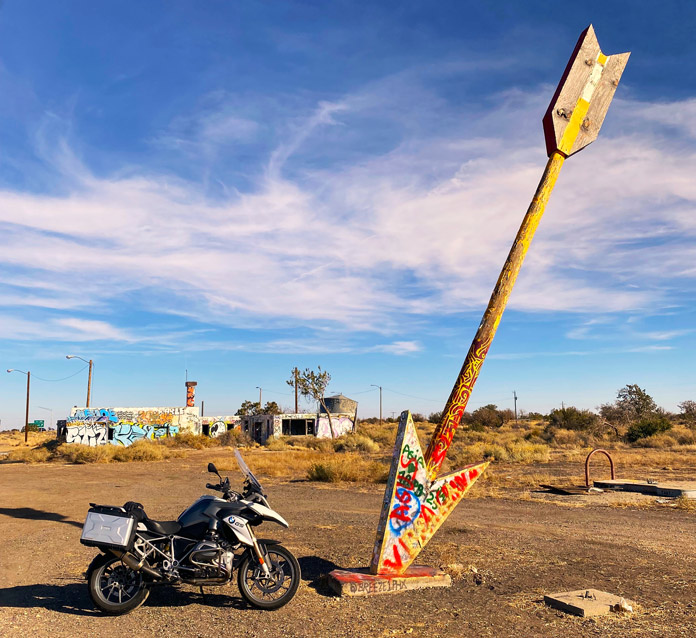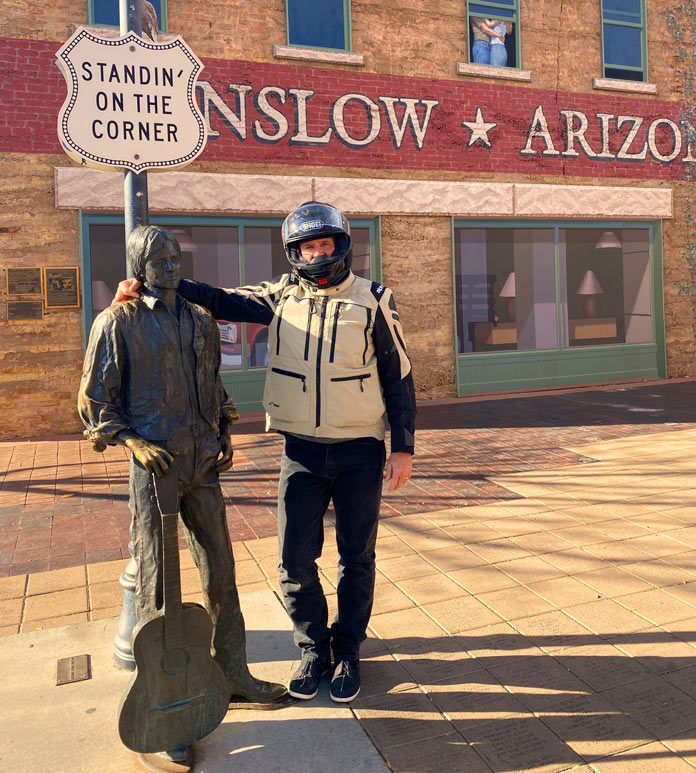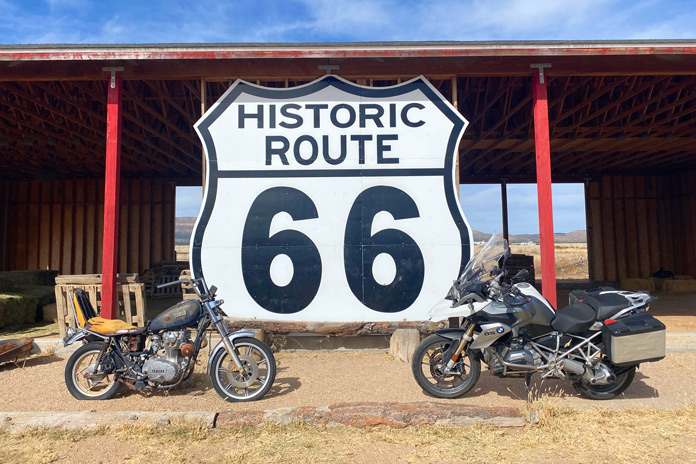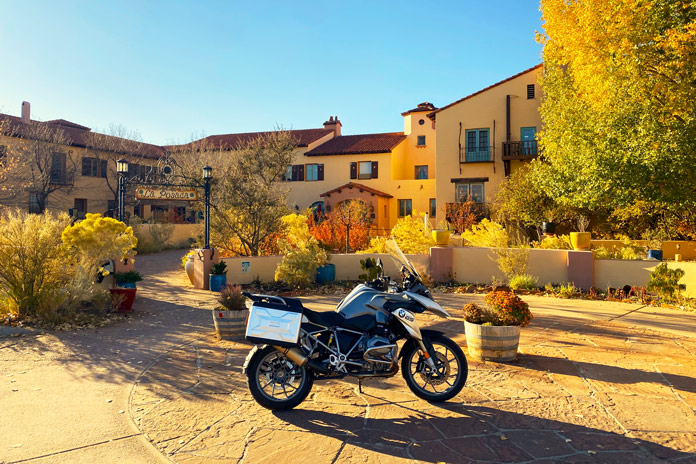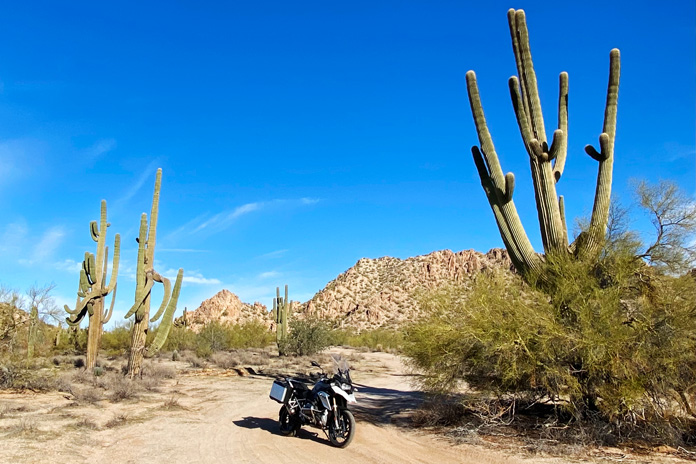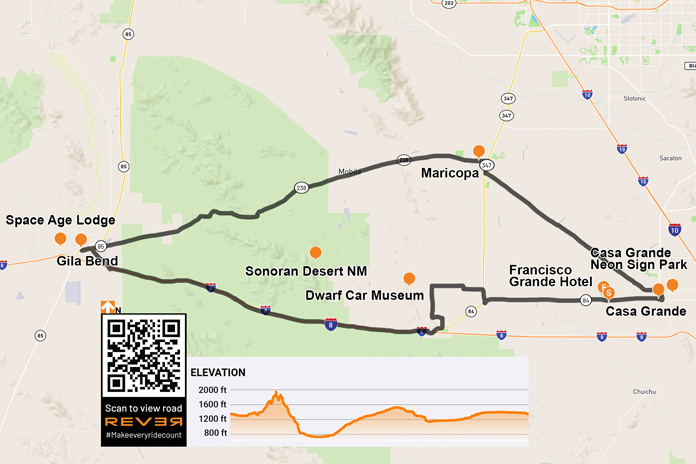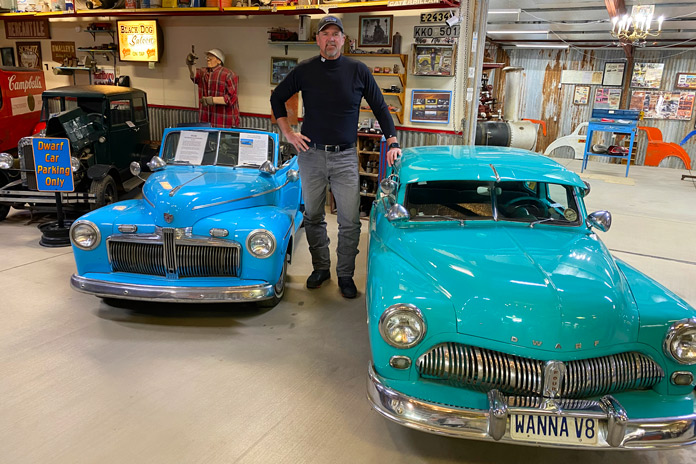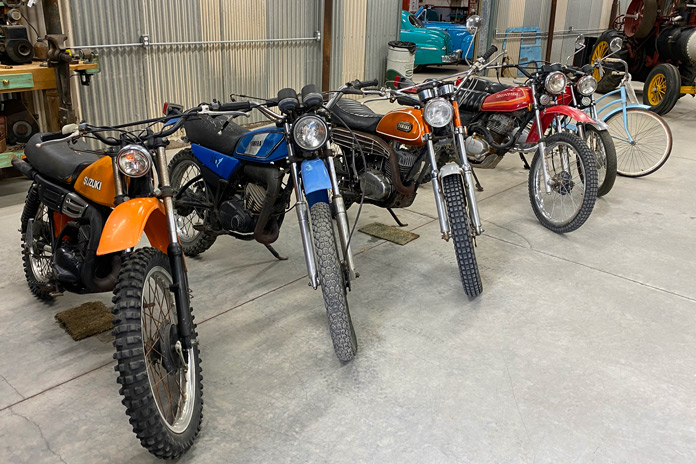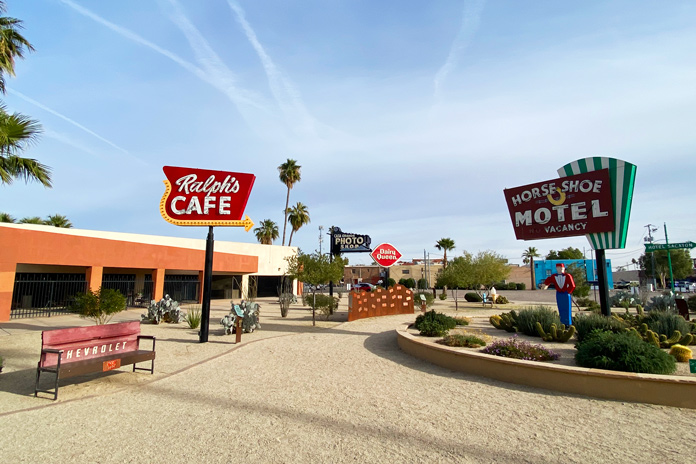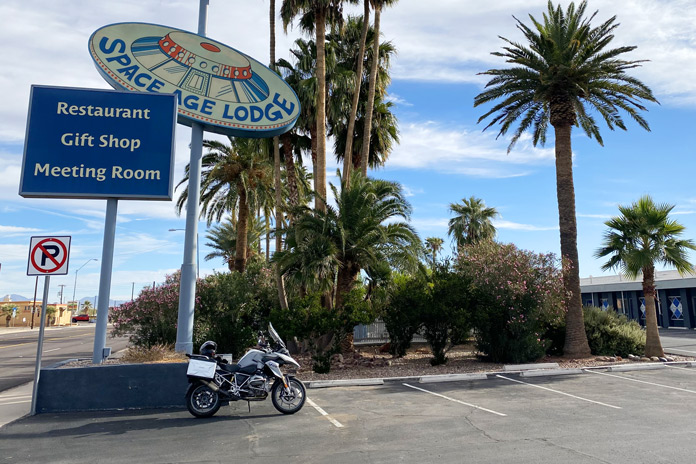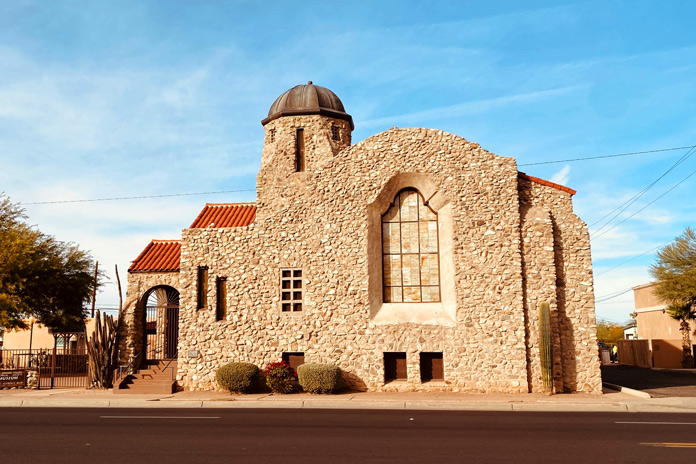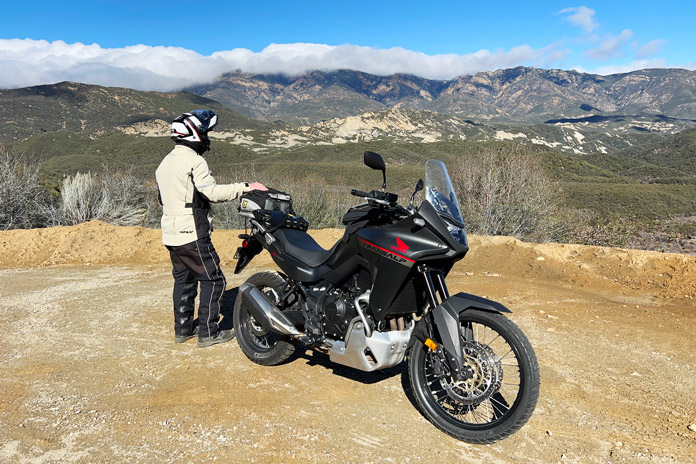
The charming and eclectic coastal city of Ventura is the launch and landing pad for this diverse 340-mile loop that crosses parts of four California counties along the Central Coast. For this California motorcycle ride, Get an early start with a breakfast burrito at one of the auténtico taquerias on Ventura Avenue, then check out the scenic views of the city, curving shoreline, and distant Channel Islands from Grant Park high above. From here we head north on State Route 33 (Ojai Freeway) toward some of the finest mountain, canyon, rural, and coastal riding in the state.

The 2024 Honda XL750 Transalp I chose for this ride has ample suspension travel, and its dirt-worthy 21-inch front and 18-inch rear spoked, tube-type wheels were shod with aggressive (and noisy) Metzeler Karoo Street tires. Out of the box, the Transalp can tackle many levels of dirt, but California had just experienced yet another atmospheric river of rain, so I kept the tires on the tarmac during this trip.
Ventura County | California Motorcycle Ride
In Ojai, a left turn onto Maricopa Highway keeps you on SR-33 past the last gas station (and bathroom, burrito lovers!) for 50 miles, and quite soon it traces the curves of the Ventura River and north fork of Matilija Creek past gated ranches and orchards. After crossing over the creek at the rock quarry, the road climbs and tightens up, and within a few minutes I was flinging the Transalp around some of California’s best curves.
Though nicknamed the “Half-rica” Twin, the Transalp offers more than 75% of the power and torque of its big brother, a weight savings of more than 50 lb, and a lower center of gravity. With a light load and solo rider, it’s surprisingly quick and rips smoothly through its 6-speed transmission with an up/down quickshifter. There’s enough power on tap to make quick work of hills and passes, with a deep velvety noise from the exhaust and just enough pulse feel from the 755cc parallel-Twin’s counterbalanced 270-degree crankshaft.
Scan the QR code above or click here to view the route on REVER
Four preset ride modes plus a customizable User mode deliver full power at varying rates and alter engine braking, traction control, and ABS accordingly. My 2018 CRF1000L Africa Twin labors at times riding two-up with a full load, so I wouldn’t choose the smaller Transalp for that, but a solo rider will rarely wish for more power.
From Ojai, SR-33 ascends the sunny side of Pine Mountain to its 5,160-foot summit pass, rounding dozens of exciting bends, threading passes and canyons, and skirting towering peaks on either side before winding down the mountain’s piney backside into Cuyama Valley.

On this day, the summit was enveloped in fog and mist, and slowing the pace for the wet road, I appreciated the Honda’s comfort, with an upright seating position and a plush saddle. Legroom is plentiful, vibration from the engine is almost nil, and the fairing and windscreen keep most of the cold blast off your lower body and chest. Optional heated grips get quite hot and greatly enhance the Transalp’s adventure-touring competency.
See all of Rider‘s California tour stories here.
Although we’re still at 2,900 feet, once down in the wide Cuyama Valley, SR-33 straightens as if pulled taut, passing bucolic farms, horse ranches, and the community of Ventucopa. In the summer, the mountain behind us and the Pacific coast ahead can be the only respites from scorching heat on most of this ride. On this chilly winter day, though, I was happy to be in the lower, warmer valley.
Santa Barbara and San Luis Obispo Counties, Stage 1 | California Motorcycle Ride
Just before reaching State Route 166, SR-33 nips off the extreme northeast and southeast corners of Santa Barbara and San Luis Obispo counties, which are so large that we’re nowhere near their namesake cities on the coast. A reliable pitstop on this stretch is the Santa Barbara Pistachio Company, which has bathrooms, snacks, and gas. The company’s organic pistachios that it grows, roasts, and sells here on its 420-acre farm are delicious, so I always bring home a couple of bags.

At the T-intersection with SR-166, you can significantly shorten the loop and still enjoy a great ride by turning left toward the town of Cuyama, and New Cuyama five miles farther on, which has gas, a market, and the Burger Barn and Cuyama Buckhorn restaurants, popular landmarks in this historic town.
When oil was discovered in this valley of homesteads and ranches in the late 1940s, Richfield Oil built the town of New Cuyama to house its workforce. When the oil boom played out, the ranches and farms returned, blanketing the river valley floor with gold and green where Chumash Indians once harvested “Kuyam,” or freshwater clams.
After New Cuyama, SR-166 west is a beautiful but well-patrolled and mostly straight shot to Highway 101 at Santa Maria, cutting off the entire top half of the full route and shortening the ride to 215 miles. Pick up the latter part of the full loop by turning left on Tepusquet Road.

Kern County | California Motorcycle Ride
Continuing east on SR-33/166 to complete the full loop, the road winds down more than 2,000 feet into Kern County and the hardscrabble town of Maricopa. This is the Tulare Basin of California’s vast Central Valley, aka the “toolies.” Between Maricopa and McKittrick where we catch State Route 58, there isn’t much to excite the eyeballs except sandy hills and oilwells.

If it hasn’t rained lately and you like unpaved roads, consider turning left onto Soda Lake Road, which crosses the Carrizo Plain National Monument into California Valley, a remnant of the Central Valley 300 years ago when it was mostly grassland and deer and antelope roamed among the wildflowers. Visibly traversed by the San Andreas Fault and rimmed by low mountains, the plain after a wet winter can be carpeted with a super bloom, which looks like a scene from the Wizard of Oz. Soda Lake Road beats the heck out of SR-33’s oilfields when it’s dry but is best avoided when wet and muddy.
San Luis Obispo County, Stage 2 | California Motorcycle Ride
Soda Lake Road eventually rejoins our paved loop at SR-58, though you shouldn’t miss the section of 58 to the east that you bypassed by taking Soda Lake Road. From the left turn at McKittrick from SR-33, SR-58’s first 18 miles serve up a variety of fast straights and tight turns that rise and fall on a whim – after riding it regularly for 40 years, I still haven’t memorized them all.
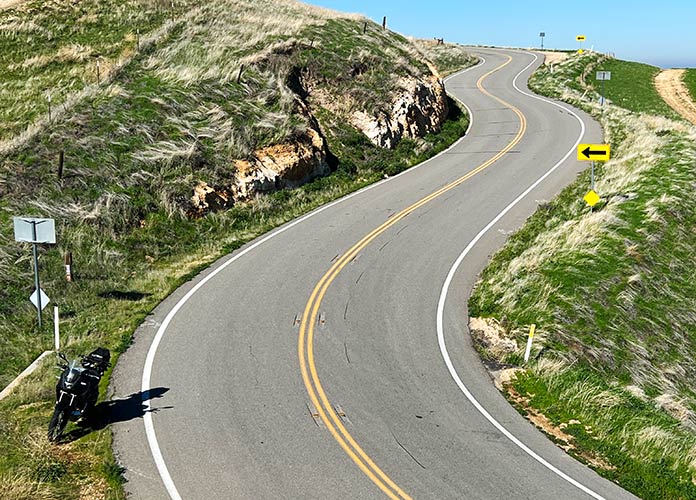
By this point I had dismissed any concerns about the Transalp’s dirt-skinny 21-inch front hoop slowing its handling. Thanks to its wide handlebar, low center of gravity, and ample cornering clearance, the bike leans, turns, and transitions quickly and predictably. If there’s a weak spot, it’s the suspension, which is only adjustable for spring preload in back. Though fluid, comfortable, and well-damped enough for lighter riders or a moderate pace, the bike is too softly sprung and underdamped for aggressive on-road and rougher off-road riding.
When the twisties end on SR-58 west, the view stretches to the mountains on the far side of California Valley, and the straight road reaches to the horizon. For miles it’s only interrupted by the occasional 90-degree bend around a ranch boundary and several steep hillcrests, one or two of which will loft your front wheel (or both!) if you’re really moving. Don’t say I didn’t warn you….

After its sweeping grasslands and enormous solar panel fields, SR-58 transitions into forested hills and the curves return. Detour north on La Panza Road to Creston for one of the highlights of this route: State Route 229/Webster Road, justifiably nicknamed Rossi’s Driveway after the MotoGP champion. Jumping very briefly on State Route 41 west from La Panza, make an immediate left into Creston on SR-229. Both the Longbranch Saloon and the Loading Chute have great food, but there’s no gas in town.
Heading south from Creston, soon the centerline disappears, and the road begins to undulate madly between the white lines on either side like a very long driveway designed purely for two-wheel entertainment. A bonus is the beautiful canopy of trees and green hills that surround the road. Reaching SR-58 again after just six miles, I often ride Rossi’s Driveway several times before heading home.
After playtime on SR-229, turn west on SR-58 toward Santa Margarita, which offers food and gas, and then jump on U.S. Route 101 south.
Santa Barbara County, Stage 2 | California Motorcycle Ride
Take the exit for SR-166 east. After the big Cuyama River Bridge, turn right onto Tepusquet Road, which twists its way up and over a pass and winds through lovely countryside in dappled sunlight. Stay left at the fork and then cross the Tepusquet Creek bridge. Turn left on Foxen Canyon Road, the unofficial wine route of Santa Barbara County, and enjoy a curvy ride through vineyards, majestic oaks, and endlessly green fields. Foxen eventually reaches State Route 154, which heading south passes Cachuma Lake on the way to Santa Barbara. Then it’s down U.S. 101 with spectacular views of the coast at sunset, and then finally Ventura once again. Taco time!
Four County Rewind | California Motorcycle Ride
There is an argument to be made for running this loop in reverse, but I would rather be on the coast at sunset than on Pine Mountain and SR-33 in the dark. Whichever direction or detour you choose, there really aren’t any bad roads on this route…just don’t count on having a cell signal. Bring a flat kit, keep your tank full, and watch out for wildlife.

Most of the ride is through remote areas for which the Honda XL750 Transalp was bred (and during the 1,004 miles I lived with the bike, it averaged 53 mpg, good for 238 miles from its 4.5-gallon tank). Beef up that rear shock if needed, and maybe add the optional heated grips, centerstand, handguards, and skid plate. Then enjoy the Four County Loop!
See all of Rider‘s touring stories here.
Four-County California Motorcycle Ride Resources
- Central Coast California
- Ventura County Coast
- Ventura
- Ojai
- Santa Barbara
- Santa Barbara Pistachio Co.
- San Luis Obispo
Mark Tuttle was the Editor-in-Chief of Rider for several decades before stepping down in 2020 to spend more time with family, riding motorcycles, camping, fishing, and looking for his reading glasses. He has road tested hundreds of motorcycles and ridden in 28 countries (so far) and every U.S. state except Nebraska, but only because he lost the directions.
The post Four-County California Motorcycle Ride on a Honda Transalp appeared first on Rider Magazine.
Source: RiderMagazine.com


